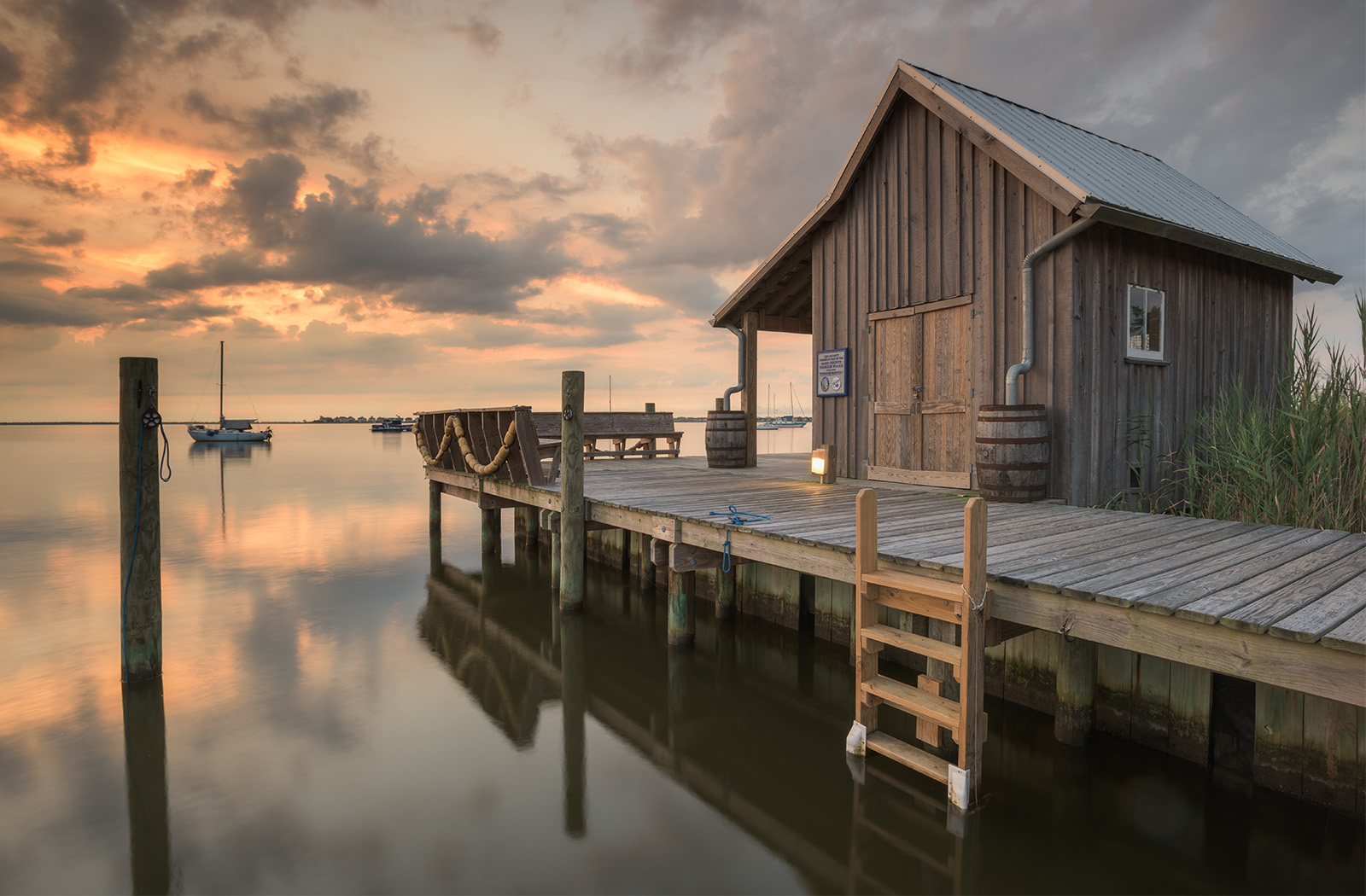
The Outer Banks (OBX)
The Outer Banks are a narrow chain of barrier islands off the coast of North Carolina. They’re unique for their great distance from the mainland (thirty to forty miles in spots) and their physical shape (cuspate forelands, or capes). The physical landscape is a study in energy: waves, winds, tides, and the storms that set them all into chaotic motion. Change is the constant. The Outer Banks, for me, are the rare place where the physical environment is still dominant; it cannot be ignored.
What is there to see?
The dominant landscape elements are The Atlantic Ocean and the sounds that separate the island from the mainland (Pamlico, Roanoke, and Currituck). The land is loose, deep sands.
Lighthouses. Tall brick lighthouses, each with their own distinct daymarks (paint schemas) and nightmarks (flash patterns). The structures include Cape Hatteras Lighthouse, Bodie Island Lighthouse, The Currituck Lighthouse, and The Roanoke Marshes Light.
Fishing piers on the Atlantic Ocean. Some older wooden piers with tons of character and some newer concrete piers with symmetry and pattern. To the west, on the Pamlico, Roanoke, and Currituck Sounds, boardwalks and pedestrian walkways over the water.
Maritime forests. Nags Head Woods, Kitty Hawk Woods, and Buxton Woods. Lichens, mushrooms, wildflowers, and seaside forest.
Jockey’s Ridge State Park. The highest sand dune on the Atlantic Coast.
Bridges. Pea Island National Wildlife Refuge. The Buxton jetties. Beachcombing treasures. Waterfront towns.
When are good times to visit?
The Outer Banks are remarkably consistent behind the lens independent of season. However, your experience in place will be highly correlated to the season you visit.
Winter (January + February)
My personal favorite season to work the coast. The bugs will be nonexistent: no mosquitoes, midges or other biting insects. The heat of the sun is welcome and will not limit the experience. Crowds are minimal. Beaches are open and empty. Beachcombing is optimal. Nor’ easters create weather that can flood and dramatically change the landscape.
Autumn (October + November)
My second favorite season to work the coast. Very comfortable warm temperatures are still hanging around. Hurricane season can make for dramatic surf and weather conditions. The mosquitoes and insects, while still present, are beginning to tail off. Low angled light can be beautiful in the morning/evening. Some wildflowers, plants, and critters are still present in the landscape to photograph.
What type of camera gear is optimal for this place?
Tripod. The majority of landscape photographs made in the Outer Banks involve water. Creative options abound if you have a solid base to work from. Carbon fiber or aluminum is preferrable due to saltwater.
Wide-angle lenses. The beach is wide open. The ocean is vast. The skies can be huge. It’s nice to have a wide lens to shoot seascapes and other coastal scenes. This can range anywhere from 14mm to 24mm on the lower end.
Graduated neutral-density filters. If you’re a computer wiz with Photoshop and prefer to composite multipe exposures, this one doesn’t apply. If you’re like me, the coast and the Outer Banks are the perfect place to use a 0.6 stop GND filter because the horizon is flat without any intrusions. This filter keeps your exposures more balanced at sunrise and sunset by darkening the brighter sky. If you’re consistently photographing sunrise and sunset, a reverse GND filter might be of interest (it darkens the middle of the frame, where the sun ball is rising/setting).
How difficult is the terrain?
Easy to moderate. The landscapes of the Outer Banks are mostly flat (with the exception of a few large dunes). Most attractions are near parking as well. For those who want a bit more adventure, walking through deep sand will be necessary. This can be moderately difficult.
Adventure on your schedule.
Choose your dates, join me in the field, and let’s use our cameras to explore and connect with the physical landscape.
Behind every digital photograph is a real experience.
Let’s have some of those!
e-mail: info@markvandyke.net


















Ready to join me in the Outer Banks?
Photo adventures give me the freedom to live my dream. If I can show you a new landscape or add depth to a landscape you already know, drop me a line. Let’s get together!
e-mail: info@markvandyke.net
